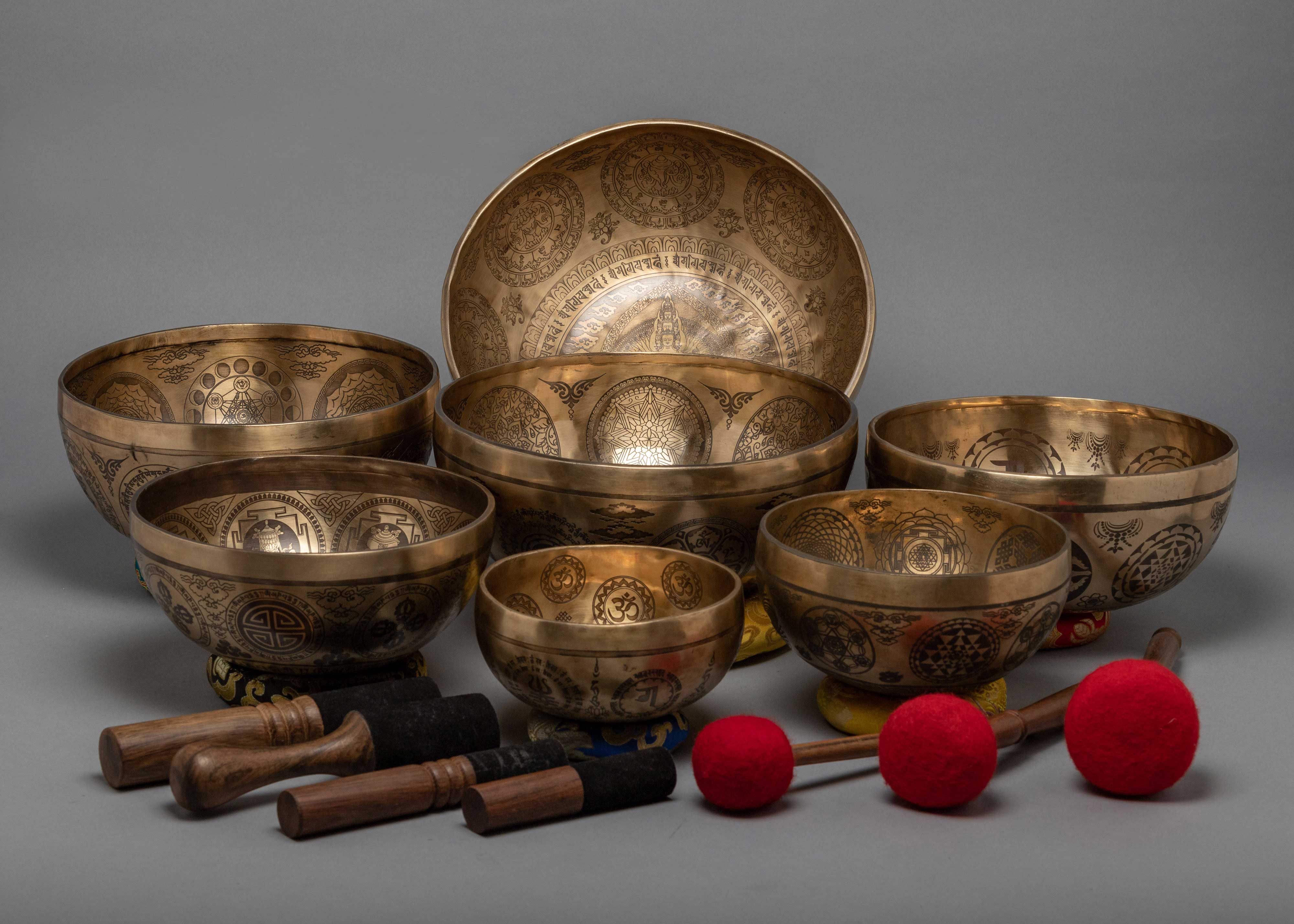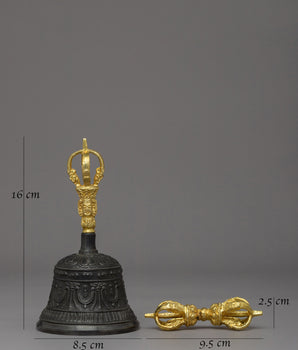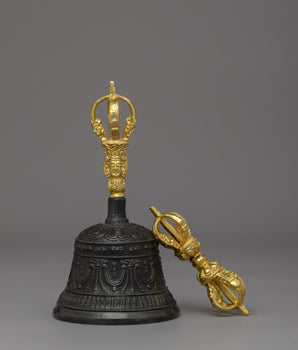Himalayan Singing Bowls For Healing, Meditation & Mindfulness
For centuries, Buddhist monks in Northeast Asia have utilized singing bowls to purify negative energy and enhance religious practices and meditation. And now, their use has become widespread. At first glance, Singing Bowls may appear to be mere shelf decorations, but they are much more than that. These metal bowls serve a clinically-proven multipurpose function, providing relaxation, stress relief, and improved blood circulation. These bowls are often composed of metals, such as copper, brass, and tin, and are frequently embellished with elaborate patterns and symbols.
When struck or played with a mallet, Tibetan singing bowls emit a rich, deep sound; it is said that the bowl's sound and vibrations have a potent therapeutic impact on the body and mind, fostering calmness, easing tension and anxiety, and enhancing general well-being. In this blog, we will discuss selecting the eligible singing bowl by focusing on three main factors: knowing the right tone, purpose, and size.
Knowing the Right Tone and Vibrations:
The tone of a singing bowl is an essential factor to consider when choosing a singing bowl. The vibration of the metal produces the style, and each singing bowl has its unique sound. The tone can be classified as high, medium, or low.
High Tone: Singing bowls with high tones are generally smaller and produce a bright and vibrant sound. These bowls are suitable for those who want to use them for meditation or to uplift their mood.
Medium Tone: Singing bowls with medium tones are the most common, producing a balanced and harmonious sound. These bowls are suitable for beginners and experienced practitioners and can be used for meditation, sound healing, or relaxation.
Low Tone: Singing bowls with soft tones are more prominent and produce a deep, rich sound. These bowls are suitable for those who want to use them for deep relaxation, sound healing, or to ground themselves.
Singing Bowl produces a different set of notes and frequencies. These notes target specific chakras in our bodies. You can use a separate Himalayan bowl to activate or heal other chakras.
| Chakra | Notes |
| Muladhara | Fa-F |
| Svadhisthana | Do-C |
| Manipura | Sol-G |
| Anahata | Re-D |
| Visuddha | La-A |
| Ajna | Mi-E |
| Sahasrana | Si-B |
Knowing the Purpose:
Another essential factor to consider when choosing a singing bowl is knowing the purpose. Singing bowls can be used for different purposes, such as meditation, sound healing, relaxation, and even as decorative items.
Meditation: Singing bowls can be used to enhance meditation practice. They produce a sound that can help to focus the mind and promote relaxation. When choosing a singing bowl for meditation, choosing a bowl with a tone that resonates with you and your practice is recommended.
Sound Healing: Singing bowls are commonly used in sound healing practices to promote relaxation, reduce stress, and balance the chakras. When choosing a singing bowl for proper healing, choosing a bowl that produces a deep and rich sound that can penetrate the body is recommended.
Relaxation: Singing bowls can also be used for relaxation purposes. They produce a sound that can help to reduce stress and anxiety and promote calmness. When choosing a singing bowl for relaxation, selecting a bowl with a tone that resonates with you and your intention is recommended.
Finding the Right Size/ Diameter:
When acquiring a singing bowl, consider its size and thickness, as this affects the mellowness and pleasantness of the sound produced when playing the bowl's edge with a stick. For instance, thicker bowls tend to have softer, more mellow sounds.
Furthermore, the diameter of singing bowls varies, with the most prominent "mother" bowl in C root being the most versatile and easy to play, even for beginners. These hypnotic tones can be fine-tuned to a consistent pitch to aid healing practices.
Small: Small singing bowls are generally 3 to 5 inches in diameter and produce a high-pitched sound. They are suitable for those who want to use them for meditation or to uplift their mood.
Medium: Medium singing bowls are generally 6 to 7 inches in diameter and produce a balanced and harmonious sound. They are suitable for both beginners and experienced practitioners and can be used for meditation, sound healing, or relaxation.
Large: Large singing bowls are generally 8 inches or more in diameter and produce a deep and rich sound. They are suitable for those who want to use them for deep relaxation, sound healing, or to ground themselves.
When choosing a singing bowl, it's recommended to select a bowl that fits comfortably in your hand and produces a sound that resonates with you.
Authentication
Despite the long history of singing bowls, people still seek precision in their purchases. This has increased significantly with new and trendy bowls in the market. Many doubt the authenticity of machine-hammered bowls, while some question hand-cast ones.
To avoid being deceived:
- Carefully examine the bowls and inspect their authenticity.
- Look at numerous bowls to gain clarity and identify marks left by the hammering process.
- Strike or ring the bowl to listen to the sound and determine how long it lasts.
Here at Evamratna we provide Singing bowl of the best quality. They are the authentic bowls that has been crafted using traditional Himalayan methods in our studio. You can tell by the look of it and even the quality of the sound each bowl makes at the wooden stroke.
Scientific Evidence On Effects Of Singing Bowls on Therapy
The Effects of Singing Bowl Sound Meditation on Mood, Tension, and Well-being: An Observational Study was conducted by the examining 62 male and female participants with an average age of 49.7. All participants completed standardized questionnaires before and after the sound healing session to measure tension, anger, confusion, depression, anxiety, and spiritual well-being. The participants were asked about their previous experiences with meditation, singing bowls, and consciousness-altering substances, as well as any physical pain they were experiencing.
During the session, participants lay on yoga mats and listened to the sound meditation for about an hour while Tibetan bowls, crystal singing bowls, gongs, and other instruments were played. Researchers observed that tension was reduced in all participants, and depression and anxiety decreased significantly after the meditation. Participants with no experience with singing bowls showed more significant effects, especially those aged 40-59 who were not interested in this type of meditation, demonstrated by a substantial reduction in pain and physical tension.
Sound meditation can effectively reduce stress, and health professionals could offer it to patients relatively cheaply. Furthermore, the long-term benefits of reducing stress-related illnesses make sound meditation appealing for healthcare spending.
In conclusion, choosing a suitable singing bowl requires careful consideration of several factors, including the quality of the bowl, its size, weight, and tone. Below are some tips to help you choose the suitable singing bowl for your needs:
Quality: Look for a high-quality singing bowl made of pure metal. It should be hand-hammered by skilled artisans and have a smooth finish with no visible seams or cracks.
Size: Singing bowls come in various sizes, from small handheld bowls to large floor-standing ones. Consider the size of the space where you will use the bowl and the purpose for which you will use it. A larger bowl may be more appropriate if you are using it for meditation or healing.
Weight: The bowl's weight affects its tone and vibration. Heavier bowls tend to have a lower tone and a deeper vibration, while lighter bowls have a higher tone and a lighter vibration. Consider your preference for tone and vibration when choosing the bowl's weight.
Tone: The bowl's tone is one of the most critical factors. Each bowl produces a unique sound; finding one that resonates with you is essential. Listen to the sound of the bowl before you buy it to ensure that it creates a tone that you find soothing.
Intention: Consider the purpose of your singing bowl. If you plan to use it for meditation, you may want a bowl with a longer sustain and more subtle overtones. If you plan to use it for sound, therapy or healing, consider using a bowl with a more pronounced tone and a deeper vibration.










